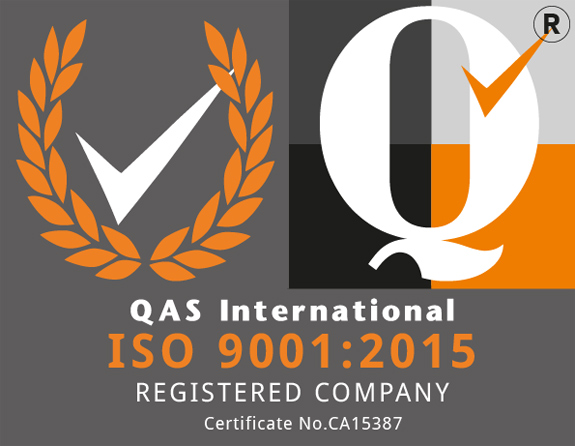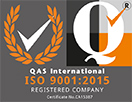
Rubber mats have become an essential part of our daily lives, whether we realise it or not. In most workplaces, these versatile mats have many uses and provide comfort, safety, and protection against accidents and injuries. However, have you ever wondered what happens to these mats once they’re no longer in use? Are they discarded and left to contribute to our ever-growing waste problem, or can you recycle rubber mats?
Recycling allows you to transform your well-used mats into new, functional rubber products rather than leaving them in landfills. As such, they become an environmentally friendly solution that can significantly reduce waste and promote sustainability. In this blog, we’ll look into some of the recycling techniques used for rubber mats and what they can go on to become.
Rubber mats are versatile flooring products designed to provide comfort, safety, and protection in various workplace applications and are typically made from natural or synthetic rubber compounds. Natural rubber is derived from the latex of para rubber trees, while synthetic rubber is produced through chemical processes using petroleum-based fuels.
You’ll find several common types of rubber mats in workplaces up and down the country, and one of the most popular is the anti-fatigue mat. Featuring cushioning properties that reduce the strain on feet, legs, and back, it’s ideal for workers who need to stand for long periods. Another is the rubber drainage mat, designed to offer durability with a slip-resistant surface for wet working environments.
However, the environmental impact of these mats is a growing concern. As they reach the end of their lifecycle, they often end up in landfills, adding to waste accumulation. By recycling rubber, you can reduce their impact and promote a more sustainable approach to waste management.
Recycling is something we’re all familiar with at home and work. It involves recycling sites collecting waste material, sorting it with a separation process, and processing it before it’s converted into new products, reducing the need for raw materials and minimising waste accumulation.
However, the recyclability of different materials, including rubber, depends on various factors, and the material's composition is crucial. Some materials, like glass and aluminium, can be repeatedly melted and reshaped without significantly losing quality. Other materials, such as certain plastics, may need a different recycling process due to their composition.
To maximise the recycling of certain materials, including rubber, it’s important to encourage proper commercial recycling practices and invest in innovative technologies at recycling sites that can efficiently process and transform different waste materials into recycled products.
To recycle rubber mats, various techniques can transform old, used, or damaged mats into new, recycled rubber products. These techniques break down the rubber material and remove impurities, allowing it to be processed and reused in different ways. Let’s look at the mechanical and chemical recycling techniques that are currently in use.
A mechanical recycling process plays a vital role in recycling rubber. It involves breaking down the mats into smaller pieces, making moving on to further processing easier. Two standard mechanical recycling methods used for rubber mats are shredding and granulation and cryogenic grinding.
Shredding and granulation: Shredding and granulation processes involve reducing rubber mats into smaller particles and are efficient methods of preparing them to become newly recycled rubber products.
Mats are fed into a machine equipped with sharp blades that shreds them into small pieces. These pieces can then be processed into granules through a granulator which reduces the larger shredded pieces into granules, making them easier to handle and use in various manufacturing processes.
Cryogenic grinding: Cryogenic grinding (or cryo grinding) involves freezing the rubber with liquid nitrogen and grinding them into ultra-fine particles. The low temperature makes the frozen material brittle, helping the grinding process.
Cryogenic grinding helps produce fine rubber polymer that can be used in various applications, such as composites, coatings, resins, or even 3D printing powder. This method offers advantages as it preserves the rubber's quality and enhances the recycling process's efficiency.
Chemical processes offer different recycling methods, turning rubber mats into valuable resources. Two chemical recycling methods are devulcanisation and pyrolysis, using chemical compounds to break down the rubber and recover its core components for reuse.
Devulcanization: Devulcanisation breaks these links, essentially turning the old rubber into new natural rubber material.
Treated with heat, chemicals, or both, the sulfur chemical bonds break down, allowing the rubber to regain its original form. The process allows the rubber to be reprocessed to produce new recycled rubber products.
Pyrolysis: Pyrolysis is a chemical recycling method for different types of rubber that uses high temperatures and a lack of oxygen to break down rubber into its constituent components. Commonly used for old tyres, the process causes the material to decompose into liquid pyrolysis oil and can be further refined and used as fuels or feedstocks to produce various chemicals.
Pyrolysis is a viable recycling alternative for old floor mats, with rubber being converted into valuable resources for a more sustainable approach to recycling.
The potential uses for old mats are diverse and environmentally beneficial, transforming them into a new recycled rubber product. These products can include synthetic rubber flooring, gym mats, safe playground surfaces, gardening products and equipment, car parts, football pitches, and even mulch for garden beds.
By diverting rubber mats from landfills to local recycling facilities and repurposing them into new products, you minimise waste and reduce the demand for raw materials. And the durability of recycled rubber also contributes to longer product lifecycles, reducing the need for replacements. Overall, it’s environmentally friendly, helping to protect natural resources and fight global climate change.
Properly disposing of mats unsuitable for recycling is crucial. Exploring other disposal methods is important, so contact your local recycling facility or waste management company to find out more.
Reusing and repurposing rubber mats is an eco-friendly way to stop them from ending up in landfills. Old mats can find new life in various applications even if they’re no longer suitable for their original purpose. Consider donating them to local animal shelters, where they can be used as bedding or flooring in animal enclosures for comfort.
Rubber mats can also be repurposed as protective padding for furniture or vehicles, drainage for raised beds in the garden so they don’t retain water, or even as anti-slip surfaces for camping or boating. By reusing and repurposing creatively, you can extend the lifespan of older mats and reduce waste.
The importance of rubber recycling can’t be overstated. We should all recognise the significance of responsible waste management and consciously reduce our impact. Recycling rubber mats can divert waste from landfills, conserve resources, and promote a circular economy.
At MatsDirect we have high quality rubber matting for your business needs. We encourage recycling as above and can cater for businesses that need high quality rubber matting for corporate enviroments.
For more information on rubber matting for your business needs you can pick from our wide range, or contact MatsDirect UK today. You can send us a message, call us on 0161 797 6785, or email us at sales@matsdirect.co.uk, and our team can help you.

MatsDirect UK Ltd are fully accredited for the ISO 9001:2015 (Quality Management System) standard which demonstrates our ability to consistently provide our products and services that meet our customer's applicable statutory and regulatory requirements.
ISO 9001:2015 also aims to enhance customer satisfaction through the effective application of the system including processes for improvement.

Website designed by Highpoint Media
